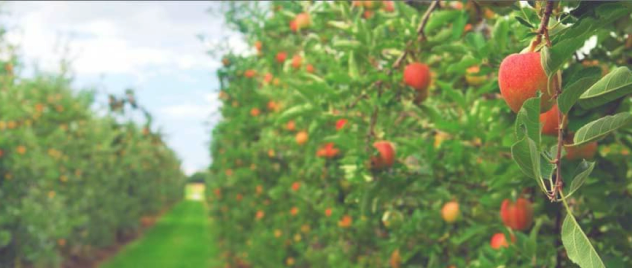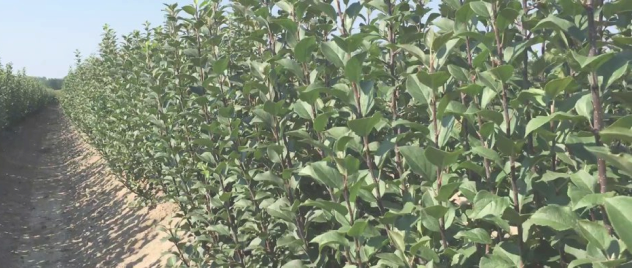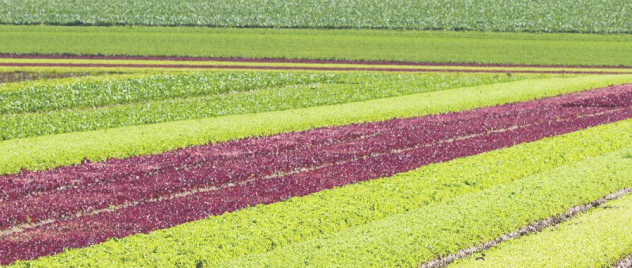GRAPES
Grapevine (Vitis vinifera L.) is a vine plant of the genus angiosperm and belongs to the Vitaceae family. It is one of the oldest cultivated crops. It is known that vines appeared on earth before man, but the system for cultivation was invented in Egypt 6000 years ago. Today is one of the most widely cultivated plants on all continents. It is believed that there are over 20000 different varieties of vines in the world today. The fruit itself is a berry and they are grouped in the form of a cluster. Depending on the variety and the climate in which to grow, they ripen from July to October. There are many varieties, but the most common division is that by use. So we have a variety of fresh consumption or stone varieties, production of wine, varieties for distillates, drying, juice, compotes, jams, or for decorative purposes.
GRAPES
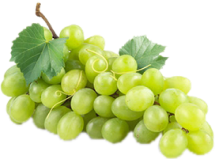
ROOTSTOCKS
KOBER 5BB
This is a female rootstock that is suitable for various soil types. Highly prolific in poorer, stony and shallow soils, shows low tolerance towards wet soils. Very vigorous growth. Matures early to mid, while ripening is delayed due to high vigour. This rootstock is often chosen for naturally low-in-vigour varieties.
SO4
Adapts to a wide range of soil types. Shows tolerance to wet soils and water stress and is especially suitable for fertile, humus-containing soils. Influences a moderately high growth vigour, but not as much as 5BB. SO4 is more frost-resistant than 5BB. This rootstock is very suitable for varieties sensitive during flowering. Promotes early maturity and bearing.
TRAINING SYSTEMS
ESPALIER
The espalier training system is widely employed in intensive commercial vineyards. It involves training the grapevines to a series of horizontal wires, creating a flat and orderly canopy. The shoots are trained along the wires, and pruning is done to maintain a balanced and productive vine. This system maximizes sunlight exposure and airflow, facilitates vineyard management practices such as pruning, thinning, and harvesting, and allows for efficient mechanization.
HIGH CORDON
The high cordon training system is designed for high-density vineyards, focusing on vertical growth and efficient use of space. It involves training the grapevines to a single horizontal wire positioned above the ground, typically at chest height. Shoots are trained vertically from the cordon, and foliage and fruiting zones are carefully managed. The high cordon system allows for easy access, promotes good airflow, and facilitates mechanized operations such as pruning and harvesting.
VERTICAL SHOOT POSITIONING PLUS (VSP+)
VSP+ is an advanced training system derived from the vertical shoot positioning (VSP) system. It aims to further optimize canopy management and improve fruit quality in intensive vineyards. Similar to VSP, the grapevines are trained vertically with shoots positioned between catch wires. However, VSP+ incorporates additional training techniques such as shoot thinning, leaf removal, and cluster positioning to enhance sunlight exposure, airflow, and disease control. This system requires meticulous vineyard management but offers great potential for high-quality grape production.
VERTICAL SHOOT POSITIONING (VSP)
VSP is a popular training system used in modern commercial vineyards. It involves training the grapevines vertically, with the shoots positioned between catch wires. The shoots are trained upwards, and the foliage is managed to ensure optimal exposure to sunlight and airflow. This system allows for efficient canopy management, better disease control, and ease of mechanized harvesting.
SUPPLEMENTARY CANOPY
The supplementary canopy training system is suitable for regions with hot climates, where excessive sunlight and heat can negatively impact grape quality. This system involves providing additional shading for grape clusters by utilizing shade cloth or other materials above the canopy. The supplementary canopy helps to mitigate sunburn and heat stress on the fruit, while still maintaining adequate sunlight exposure for vine growth. It requires careful monitoring and adjustment to balance shade and light exposure.
PERGOLA
The pergola training system is commonly used for grapevines, especially in traditional vineyards. It involves training the vines along a series of overhead trellises or arbors, creating a shaded area beneath the vines. This system allows for good airflow, sun exposure, and easy management of the vines. The grapevines are trained to grow horizontally along the trellis, and the fruit clusters hang down, making it convenient for harvesting.
SMART-DYSON
The Smart-Dyson training system is a modified version of the VSP system, known for its suitability in high-density vineyards. It involves training the grapevines to a central trunk with multiple arms extending outwards, forming a fan shape. The shoots are trained vertically, similar to VSP, and the canopy is managed to ensure proper light penetration and air circulation. This system maximizes yield per acre and allows for efficient vineyard mechanization.
See our full SELECTION of Grapevine PLANTS we have in our offer
TABLE VARIETIES
CARDINAL
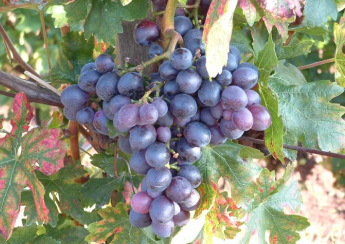
VINE:
A very vigorous vine with high fertility and regular and heavy yields. The flowers are functionally hermaphroditic, though other grape varieties planted nearby can maximize the crops. Permeable, rich, warmer soil suits best for this variety. It produces very high yields.
CLUSTER:
Very large and conical, often loose, branched.
BERRY:
Very large and rounded in shape. The skin is medium-thick, fragile, and purplish-red.
HARVEST:
A very early maturing grape. Ripens in the first half of August.
COMMERCIAL USE:
This is an early variety and a typical table variety. Used for fresh consumption due to its distinctive flavor. Handles transport well.
BLACK MAGIC
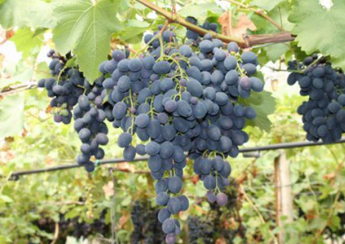
VINE:
An early variety with abundant yields. Resilient to low winter temperatures.
CLUSTER:
Medium to large in size, conical in shape. Pyramidal, sometimes with wings.
BERRY:
Medium to large in size. A red dessert grape variety. Elliptical, blue to black berry color, almost seedless. Crisp flesh with a neutral, sweet flavor and low degree of acidity.
HARVEST:
Second-half to late August.
COMMERCIAL USE:
Used for fresh consumption and juice production. Medium transport resistance.
VICTORIA
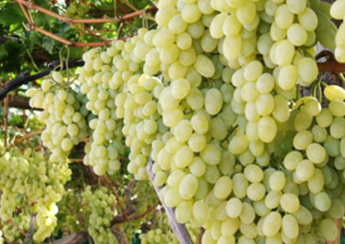
VINE:
This white grape variety is known for its productivity and early ripening and harvest. It is a consistent yielder.
CLUSTER:
Large, compact, and elongated clusters with a conical to pyramidal shape.
BERRY:
Very large and elliptical. The skin is medium-thick, green to yellow in color. Crisp flesh with neutral-sweet flavor.
HARVEST:
Late August-early September.
COMMERCIAL USE:
Handles transport well. Can be stored in cooling chambers for prolonged periods of time.
MICHELLE PALLIERI
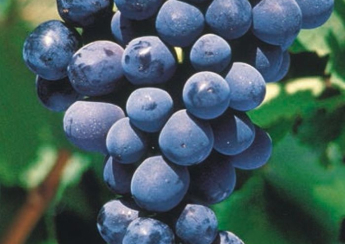
VINE:
This variety has good vigour with good fertility and average crops.
CLUSTER:
Large, cylindrical to pyramid in shape, loose.
BERRY:
Very large, strong, oval berries. The skin is medium-thick to thick, coated, and violet, almost black. The flesh is firm, crisp, and juicy, with a neutral, sweet neutral flavor.
HARVEST:
End of August to mid-September.
COMMERCIAL USE:
Excellent for transport and storage, due to its resistance. Sugar content: 14-15%.
MUSCAT HAMBURG
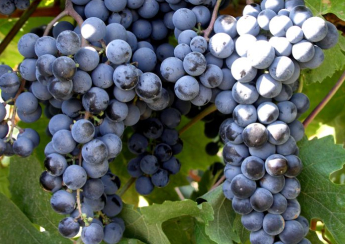
VINE:
This hardy shrub is vigorous, with abundant and regular yields. The flower is functionally hermaphroditical. Works best on permeable, deep, mildly fertile, warmer soil. Good in low humidity climates. Resilient to low temperatures. Position in full sun.
CLUSTER:
Large, cylindric to conical.
BERRY:
Large in size, oval in shape, plump and shiny. The skin is thin and bluish-red to black.
HARVEST:
A late variety, harvested in the second half of September. Long harvest window.
COMMERCIAL USE:
Excellent for fresh consumption, can contain up to 24% of sugar when fully ripe. The flesh has a distinctive Muscat taste and aroma. Handles transport well.
MOLDAVIA
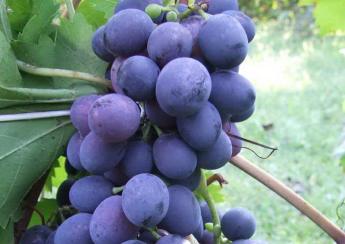
VINE:
This variety has a strong growth with heavy cropping. The flowers are functionally hermaphroditic.
CLUSTER:
Medium-sized, semi-compact, conical to cylindrical in shape.
BERRY:
Ovoid, deep purple in color, with a thick waxy coating. The skin is thick, strong, and intensely colored. Crispy flesh with a neutral flavor, well balanced between sweet and sour.
HARVEST:
A middle to late-ripening variety, usually the second half of September.
COMMERCIAL USE:
Suitable for fresh consumption and storage. Handles transport well.
AFUS ALI
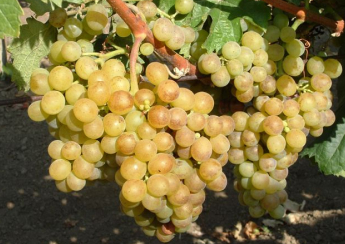
VINE:
This is a very vigorous, strong vine, with regular and heavy yields. The flowers are functionally hermaphroditic. Long or mixed pruning is recommended. Works best on permeable, deep, mildly fertile, warm soils.
CLUSTER:
Large to very large, conical in shape, branched.
BERRY:
A white table grape. Large to very large, elongated and oval in shape. The skin is medium thick and yellow to green. The sunny side achieves an amber shade.
HARVEST:
A late variety, with ripening occurring in late September to early October.
COMMERCIAL USE:
Excellent for fresh consumption, due to its 18-20% of sugar content and firm, crispy texture. Handles transport well. Can be kept in coolers for up to 60 days.
MUSCAT ITALIA
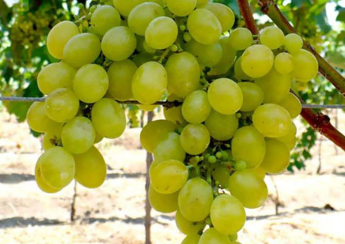
VINE:
A vigorous table grape with high fertility and regular and abundant yields. Grows at a medium growth rate. Using a wire support system is recommended.
CLUSTER:
Large, conical, and semi-compact to compact.
BERRY:
Large to very large, oval, yellow, almost golden berries. The flesh is crisp, juicy, with a light muscat aroma, seeded. Overall very attractive look and taste.
HARVEST:
Medium-late. September to early-mid October.
COMMERCIAL USE:
One of the best table varieties in the world as it is very productive, looks, and tastes beautiful, and handles transport well. It can be kept 60-90 days in simple cold storage.
LASTA
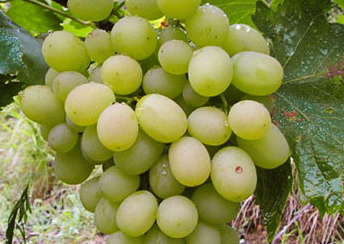
VINE:
Lasta is a white grape variety that is known for its vigor and adaptability. It is cultivated primarily as a table grape for fresh consumption. Lasta grapevines are characterized by their strong growth and ability to thrive in various climatic conditions.
CLUSTER:
The clusters of Lasta grapes are typically medium to large in size and have a conical shape. They are moderately compact and well-filled with berries.
BERRY:
Lasta grapes are known for their medium-sized to large berries. The berries are oval or round in shape and have thin, delicate skin. The skin color can range from pale green to golden yellow when fully ripe.
HARVEST:
Lasta is a mid-season to late-season grape variety. The harvest time usually falls in the late summer to early autumn, depending on the specific growing region and local conditions.
COMMERCIAL USE:
Lasta grapes are primarily used as table grapes for fresh consumption. They are valued for their crisp texture and sweet flavor profile. Lasta grapes are known to have a good balance of sugar and acidity, making them enjoyable to eat. The variety is often favored as a table variety for its attractive appearance, with golden or pale green berries. They are very well transported.
RIBIER
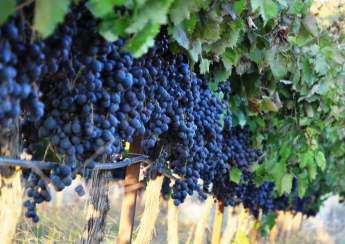
VINE:
Ribier is a robust and vigorous grapevine variety known for its consistent and reliable yields. It is characterized by its strong growth and adaptability to various climates and soil types. It thrives in permeable, well-drained soils, but can also tolerate different soil conditions. This variety exhibits good resistance to common grape diseases.
CLUSTER:
Large, cylindrical, and densely packed. They often have a conical shape, with well-attached berries.
BERRY:
Ribier grapes are notable for their medium to large size and round cone to a cylindrical shape. The berries have thick and firm skin that ranges in color from deep purple to almost black, giving them an attractive appearance. The juicy flesh of the berries is sweet and flavorful.
HARVEST:
Ribier is a late-maturing grape variety, typically harvested in the second half of September or early October.
COMMERCIAL USE:
Ribier grapes are highly valued in the commercial market. They are primarily used for fresh consumption, making them popular as table grapes. Ribier grapes are known for their rich flavor and aromatic qualities, making them enjoyable for both eating and juicing purposes. Additionally, they have a good shelf life and can handle transportation well.
STRAŠENSKI
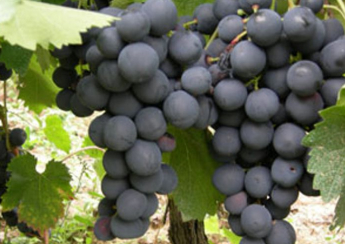
VINE:
Strašenski is a black grapevine variety known for its robustness and adaptability. It is believed to have originated in the Balkan region, particularly in Serbia. This variety exhibits strong growth and is well-suited for different soil types and climatic conditions.
CLUSTER:
The clusters of Strašenski grapes are typically medium to large in size. They have a conical or cylindrical shape, often with well-spaced and loosely-packed berries.
BERRY:
Strašenski grapes are characterized by their medium to large size and rounded shape. The berries have relatively thick and firm skin that ranges in color from deep purple to almost black, contributing to their attractive appearance. The flesh is juicy and offers a delightful balance between sweetness and acidity.
HARVEST:
Strašenski is a mid to late-season grape variety, generally harvested in the late summer to early autumn. The optimal harvest time may vary depending on the specific growing region and local conditions.
COMMERCIAL USE:
Strašenski grapes are primarily cultivated for fresh consumption as table grapes. They are highly regarded for their rich flavor and appealing texture. Strašenski grapes have a desirable sugar content and are known for their balanced sweetness. They are enjoyed for their enjoyable eating experience and are often used as a refreshing snack. Additionally, Strašenski grapes may also be used for juice production or as a component in certain wine blends.
WINE VARIETIES
CABERNET SAUVIGNON
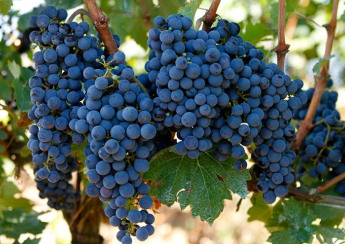
VINE:
Cabernet Sauvignon is a highly regarded wine grapevine variety known for its exceptional quality and versatility. The vines are robust and vigorous, often requiring careful canopy management to optimize grape development. Known for their resistance to hard winters.
CLUSTER:
The clusters of Cabernet Sauvignon grapes are medium to large in size and have a cylindrical or conical shape. They are densely packed, with tightly clustered berries.
BERRY:
Cabernet Sauvignon grapes are small to medium-sized and have a thick, durable skin, round in shape. The skin color is dark blue to black, contributing to the intense color of the resulting wines. The pulp is juicy and rich, with a characteristic flavor profile.
HARVEST:
Cabernet Sauvignon is a late-ripening grape variety, usually harvested in the late autumn or early winter. The exact harvest time varies depending on the specific growing region and the desired style of the wine.
COMMERCIAL USE:
It is one of the most widely planted and recognized red wine grape varieties worldwide. Cabernet Sauvignon is renowned for producing full-bodied, complex, and age-worthy red wines. The wines exhibit deep color, intense aromas of dark fruits (such as blackcurrant and blackberry), and a rich palate with firm tannins. They have the potential to age gracefully, developing further complexity and refinement over time. Cabernet Sauvignon is widely used as a varietal wine and is also blended with other grape varieties to enhance structure and depth.
SAUVIGNON BLANC
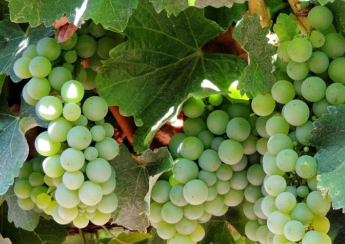
VINE:
The vines are vigorous and adaptable, thriving in various climates and soil types. They are known for their upright growth habit and can be trained in different vine training systems. Resistant to low temperature.
CLUSTER:
The clusters of Sauvignon Blanc grapes are small to medium in size, typically cylindrical or pyramidal in shape. The clusters can be relatively loose, allowing for good air circulation and sunlight exposure to the berries.
BERRY:
Sauvignon Blanc grapes are small to medium-sized with a thin, delicate skin. Round in shape or very insignificantly egg-shaped. The skin color ranges from green to yellow, depending on the ripeness of the berries. The pulp is juicy and offers refreshing acidity, often exhibiting vibrant citrus and tropical fruit flavors.
HARVEST:
Sauvignon Blanc is a mid-late variety, generally harvested in the late summer or early autumn, depending on the desired style of the wine and the specific growing region. Winemakers carefully monitor the ripeness of the grapes to capture the desired balance between acidity and flavor development.
COMMERCIAL USE:
Sauvignon Blanc is widely recognized and appreciated for producing crisp, aromatic white wines. The wines typically exhibit vibrant citrus (such as grapefruit and lemon) and tropical fruit (such as passion fruit and pineapple) aromas and flavors. Sauvignon Blanc wines are known for their refreshing acidity, lively minerality, and sometimes herbaceous or grassy undertones. Sauvignon Blanc is also used in the production of blended wines and can be aged in oak barrels to add complexity and texture.
MERLOT
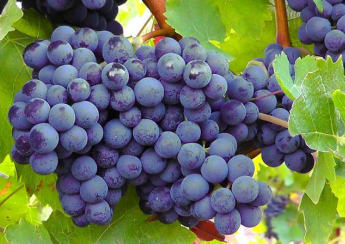
VINE:
The vines are quite vigorous, with medium-sized leaves and bunches. They are adaptable to different soil types and climates, making them a popular choice among winemakers. Resistant to low temperature.
CLUSTER:
The clusters of Merlot grapes are medium-sized and have a cylindrical or conical shape. They are densely packed with round or oval-shaped berries, creating a visually appealing cluster.
BERRY:
Merlot grapes are medium-sized with mid-thick skin and round-shaped. The skin color ranges from deep blue to black, depending on the level of ripeness. The pulp is juicy and fleshy, offering a harmonious balance of flavors.
HARVEST:
Merlot is a mid to late-ripening grape variety, usually harvested in the late summer or early autumn. The exact harvest time can vary depending on the desired style of the wine and the specific growing region. Winemakers carefully monitor the ripeness of the grapes to capture optimal flavor and tannin development.
COMMERCIAL USE:
Merlot is renowned for producing smooth, medium to full-bodied red wines. The wines often showcase ripe fruit flavors such as black cherry, plum, and blackberry. Merlot wines are known for their approachability, with soft tannins and a rounded mouthfeel. They can be enjoyed in their youth for their fruit-forward character or aged to develop more complex flavors and aromas. Merlot is also frequently used as a blending grape, adding depth and softness to Bordeaux-style blends. It is a popular varietal choice worldwide and has gained a strong following among wine enthusiasts.
CHARDONNAY
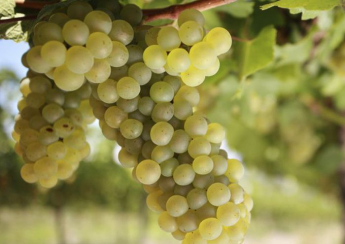
VINE:
Chardonnay is a highly versatile and widely planted white wine grapevine variety known for its adaptability and ease of cultivation. The vines are vigorous, with medium-sized leaves and bunches. They can thrive in various climates and soil types, making Chardonnay a popular choice among winemakers worldwide.
CLUSTER:
The clusters of Chardonnay grapes are medium-sized to large and can vary in shape from cylindrical to conical. They are usually compact, with tightly packed berries.
BERRY:
Chardonnay grapes are small to medium-sized with thin, delicate skin. The skin color can range from green to golden yellow, depending on the level of ripeness and winemaking techniques employed. The pulp is juicy and offers a balance of acidity and sweetness.
HARVEST:
Chardonnay is a mid to late-ripening grape variety, typically harvested in the late summer or early autumn. The exact harvest time can vary depending on the desired style of the wine and the specific growing region. Winemakers carefully monitor the ripeness of the grapes to achieve the desired balance of flavors and acidity.
COMMERCIAL USE:
Chardonnay is renowned for producing a wide range of white wines, each with its own unique style. The wines can range from crisp and unoaked to rich and full-bodied, depending on factors such as terroir and winemaking techniques. Chardonnay wines often exhibit flavors of green apple, citrus, and tropical fruits, along with hints of vanilla and butter when aged in oak barrels. They can be enjoyed as young wines to appreciate their freshness or aged to develop complex aromas and flavors. Chardonnay is also commonly used in the production of sparkling wines, including Champagne. It is one of the most popular and widely recognized white wine grapevine varieties globally.
BLACK BURGUNDY
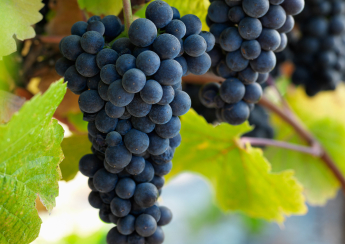
VINE:
Black Burgundy, also known as Pinot Noir, is a highly esteemed black grapevine variety known for its elegance and complexity. The vines are semi-vigorous and require attention in the vineyard. They are thriving best in cool to moderate climates with well-drained soils.
CLUSTER:
The clusters of Black Burgundy (Pinot Noir) grapes are small to medium-sized and have a compact, cylindrical shape. The berries are tightly packed together, creating a visually appealing cluster.
BERRY:
Black Burgundy (Pinot Noir) grapes are small to medium-sized with a thin, delicate skin. The skin color can range from deep purple to dark red, depending on the level of ripeness. The pulp is juicy and flavorful, offering a harmonious balance of fruitiness and acidity.
HARVEST:
Black Burgundy (Pinot Noir) is an early to mid-ripening grape variety, usually harvested in the early to middle part of autumn. The exact harvest time can vary depending on the desired style of the wine and the specific growing region.
COMMERCIAL USE:
Black Burgundy (Pinot Noir) is renowned for producing elegant, medium to full-bodied red wines with exceptional finesse and complexity. The wines often exhibit aromas and flavors of red fruits such as cherry, raspberry, and strawberry, along with floral and earthy notes. Pinot Noir wines are known for their silky texture, vibrant acidity, and subtle tannins. They can be enjoyed in their youth for their youthful fruitiness or aged to develop more nuanced flavors and aromas. Pinot Noir is a classic grapevine variety used to produce some of the world's most celebrated red wines, particularly in the Burgundy region of France.
RIESLING ITALICO
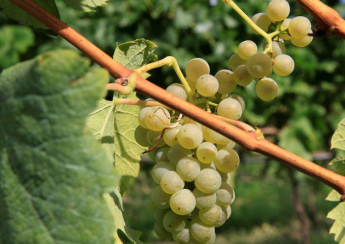
VINE:
Riesling Italico, also known as Welschriesling, is a white wine grapevine variety known for its versatility and adaptability. The vines are hardy and semi-vigorous, capable of thriving in various soil types and climates. Very resistant to low temperatures.
CLUSTER:
The clusters of Riesling Italico (Welschriesling) grapes are medium-sized and have a cylindrical or conical shape. They are compact with characteristical wing forming and have a visually appealing appearance.
BERRY:
Riesling Italico (Welschriesling) grapes are small to medium-sized with thin, delicate skin. The skin color can range from green to yellow, depending on the level of ripeness. The pulp is juicy and offers a balance of acidity and sweetness, contributing to the wine's overall flavor profile.
HARVEST:
Riesling Italico (Welschriesling) is a mid to late-ripening grape variety, typically harvested in the late summer or early autumn. The exact harvest time can vary depending on the desired style of the wine and the specific growing region.
COMMERCIAL USE:
Riesling Italico (Welschriesling) is known for producing crisp, aromatic white wines with vibrant acidity and a range of flavors. The wines often exhibit citrusy notes of lemon and grapefruit, along with floral and mineral undertones. Riesling Italico wines can be enjoyed in their youth for their fresh and fruity character or aged to develop more complex aromas and honeyed nuances. They are versatile at the table, pairing well with a variety of dishes. It has gained recognition for its ability to produce quality wines that showcase the unique characteristics of its terroir.
TRAMINAC
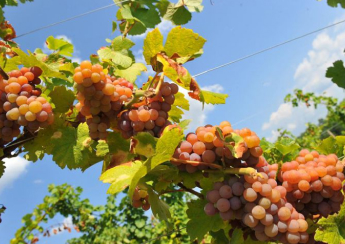
VINE:
Traminac, also known as Gewürztraminer, is a white wine grapevine variety known for its distinctive aromatics and rich flavors. The vines are vigorous and require careful management to balance canopy growth and grape production. They thrive in cool to moderate climates with well-drained soils.
CLUSTER:
The clusters of Traminac (Gewürztraminer) grapes are medium to large in size and have a conical or pyramidal shape. The berries are tightly packed and have an attractive, slightly oval appearance.
BERRY:
Traminac (Gewürztraminer) grapes are medium to large-sized with a thin, but slightly firm skin. The skin color can range from light golden to pinkish-orange, depending on the level of ripeness. The pulp is juicy, aromatic, and offers a unique combination of floral, tropical, and spicy flavors.
HARVEST:
Traminac (Gewürztraminer) is a mid-late ripening grape variety, typically harvested in the mid to late autumn. The exact harvest time can vary depending on the desired style of the wine and the specific growing region.
COMMERCIAL USE:
Traminac (Gewürztraminer) is renowned for producing highly aromatic, medium to full-bodied white wines. The wines are characterized by their intense floral bouquet, with prominent notes of rose petals, lychee, tropical fruits, and spices. Traminac wines have a rich, unctuous texture and a hint of sweetness that is well-balanced by refreshing acidity. They are often enjoyed as standalone sipping wines but also pair beautifully with spicy cuisine, aromatic cheeses, and Asian dishes.
RIESLING

VINE:
Riesling is a white wine grapevine variety known for its exceptional quality and ability to reflect the terroir of the vineyard. The vines are hardy and adaptable, thriving in cool to moderate climates with well-drained soils. Moderately vigorous but require careful management to balance canopy growth and grape production.
CLUSTER:
The clusters of Riesling grapes are small to medium-sized and have a loose or compact shape. The berries are typically small and round, creating a visually appealing cluster.
BERRY:
Riesling grapes are small to medium-sized with a thin, but slightly firm skin. The skin color can range from green to golden, depending on the level of ripeness and the specific clone or region. The pulp is juicy and offers a unique balance of acidity, sweetness, and distinct flavors.
HARVEST:
Riesling is a late-ripening grape variety, typically harvested in the autumn. The exact harvest time can vary depending on the desired style of the wine, ranging from crisp and acidic to fully ripe and sweet. Riesling's ability to retain acidity even at full ripeness contributes to its aging potential and versatility in winemaking.
COMMERCIAL USE:
Riesling is renowned for producing highly aromatic, expressive white wines. The wines exhibit a wide range of aromas, from floral and citrus notes to stone fruits, tropical fruits, and even petrol-like characteristics in more mature wines. Riesling wines can range from bone-dry to lusciously sweet, with a vibrant acidity that balances the residual sugar. They often have a light to medium body, allowing the purity of fruit flavors and the mineral character to shine through. Riesling is celebrated for its ability to age gracefully, developing complex flavors and a rich texture over time.
TAMJANIKA
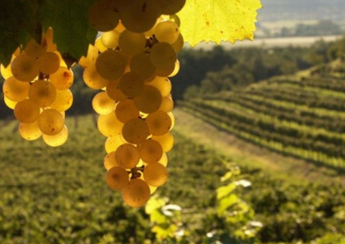
VINE:
Tamjanika is a white wine grapevine variety known for its aromatic qualities and rich history. The vines are typically medium to vigorous in growth, requiring proper vineyard management to balance canopy growth and grape production. Tamjanika is well-suited to warm climates and thrives in regions with ample sunshine and well-drained soils.
CLUSTER:
The clusters of Tamjanika grapes are medium-sized and can vary in shape from cylindrical to conical. They are moderately compact, with grapes that are tightly packed.
BERRY:
Tamjanika grapes are small to medium-sized with a thin, delicate skin. The skin color can range from green to golden-yellow, depending on the level of ripeness and the specific clone or region. The pulp is juicy and aromatic, offering a unique blend of floral, fruity, and spicy flavors.
HARVEST:
Tamjanika is a mid to late-ripening grape variety, typically harvested in the late summer or early autumn. The exact harvest time can vary depending on the desired style of the wine and the specific growing region.
COMMERCIAL USE:
Tamjanika is highly regarded for producing aromatic white wines with a distinctive character. The wines exhibit a complex array of floral aromas, including notes of roses, jasmine, and orange blossom, along with hints of tropical fruits, such as apricot and peach. Tamjanika wines are often medium-bodied, with a good balance of acidity, providing a lively and refreshing palate. They can range from dry to off-dry, with some late harvest or noble rot affected examples offering luscious sweetness. Tamjanika is particularly cherished in Southeast European wine regions, including Serbia, North Macedonia, and parts of Romania. It is a versatile grape variety, suitable for both varietal wines and blending.
PROKUPAC
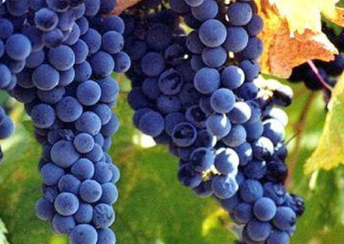
VINE:
Prokupac is a red wine grapevine variety with a long history and significance in the Balkan region, particularly in Serbia. The vines are generally vigorous and well-adapted to the continental climate. They can withstand colder temperatures and thrive in diverse soil types, although they prefer well-drained soils.
CLUSTER:
The clusters of Prokupac grapes are medium-sized to large, with a cylindrical or conical shape. They can be moderately compact, with well-spaced berries that allow for good air circulation.
BERRY:
Prokupac grapes are small to medium-sized with a thin, but moderately durable skin. The skin color ranges from dark blue to black, contributing to the deep color of the resulting wines. The pulp is juicy and offers a balance of fruitiness and acidity, showcasing the varietal character.
HARVEST:
Prokupac is a mid to late-ripening grape variety, typically harvested in the late summer or early autumn. The exact harvest time can vary depending on the desired style of the wine and the specific growing region.
COMMERCIAL USE:
Prokupac is highly regarded for producing quality red wines with a distinct regional character. The wines exhibit a deep ruby-red color and often showcase aromas of red berries, such as raspberry and red currant, along with hints of spice and earthy undertones. Prokupac wines are typically medium-bodied, with moderate tannins and balanced acidity, resulting in a harmonious and approachable palate. They can range from dry to off-dry, with some examples showing a touch of residual sugar. Prokupac is commonly used as a varietal wine, but it is also blended with other grape varieties, such as Cabernet Sauvignon or Merlot, to add complexity and structure.
SMEDEREVKA
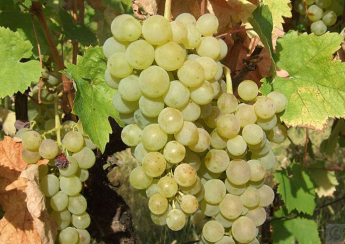
VINE:
Smederevka is a white wine grapevine variety developed in Serbia, in Smederevo region from which it takes its name. The vines are generally vigorous and adaptable to various growing conditions. They are known for their high fertility and reliable yields, making Smederevka a popular choice among local winemakers.
CLUSTER:
The clusters of Smederevka grapes are medium-sized to large, with a conical or cylindrical shape. They are moderately compact, with well-spaced berries that allow for good air circulation and even ripening.
BERRY:
Smederevka grapes are medium-sized with a thin and delicate skin. The skin color is green to pale yellow, contributing to the light and refreshing character of the resulting wines. The pulp is juicy and offers a balance of acidity and subtle fruity flavors.
HARVEST:
Smederevka is an early-ripening grape variety, typically harvested in the late summer or early autumn. The exact harvest time may vary depending on the desired style of the wine and the specific growing region.
COMMERCIAL USE:
Smederevka is known for producing light, crisp, and aromatic white wines that are enjoyed for their easy-drinking nature. The wines typically exhibit a pale straw color and showcase delicate aromas of citrus fruits, such as lemon and grapefruit, along with floral notes. Smederevka wines are refreshing on the palate, with bright acidity and a clean finish. They are often consumed young to appreciate their youthful vibrancy and fruit-forward character. Smederevka is well-suited for casual and social occasions, pairing well with a range of light dishes, including salads, seafood, and fresh cheeses. It is a popular choice both domestically and regionally, representing a significant part of Serbia's winemaking.

